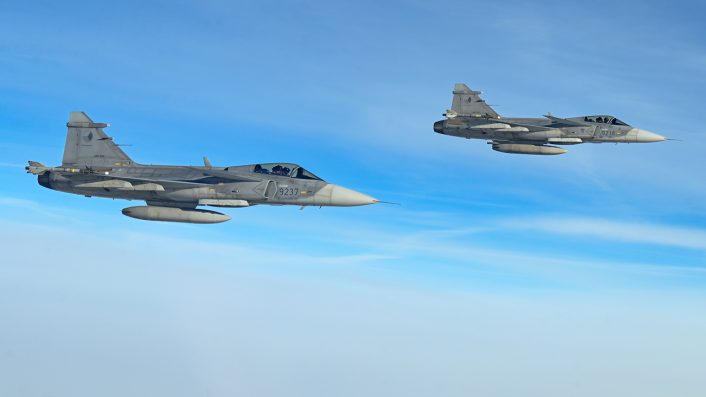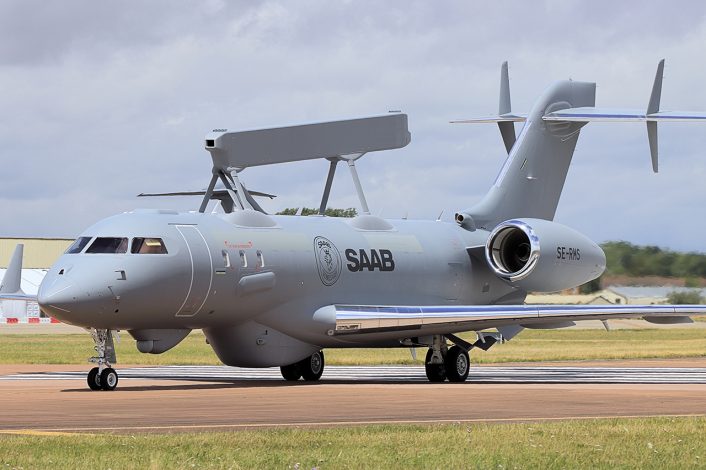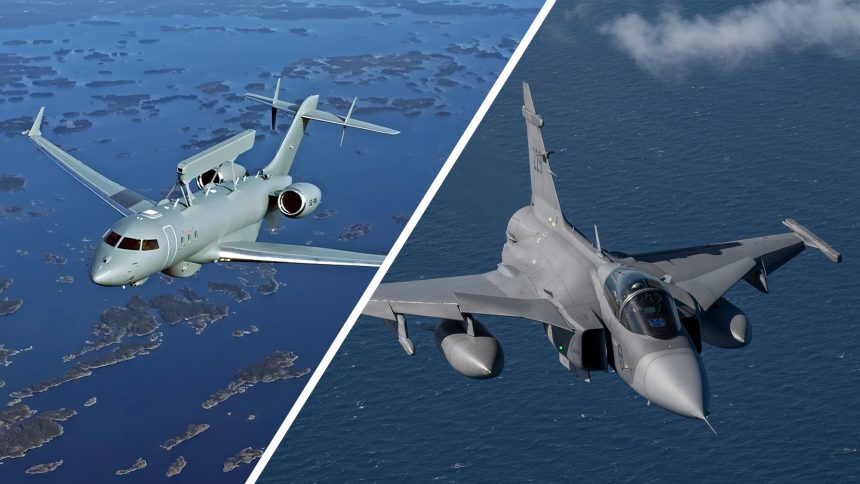Sweden’s Parliament has to approve the intergovernmental sales, which include four GlobalEye AEW&C aircraft and 12 Gripen E/Fs, before orders can be placed.
While neither acquisition is a finished deal, once the sales are granted approval from Sweden’s Parliament more formal procurement processes can begin. Intergovernmental sales will see Sweden essentially procure the aircraft from Saab on the other nation’s behalf before the actual sale is conducted between Sweden and the purchasing nation.
Saab has had a relatively small but successful recent export history, focusing primarily on nations which cannot justify the high cost or do not need the capabilities offered by larger, top-of-the-line platforms like the Lockheed F-35 Lightning II or Boeing E-7A Wedgetail.
The legacy Gripen C/D fighter is operated by Sweden itself, along with the Czech Republic, South Africa, Thailand, and Hungary. Brazil, along with Sweden, have taken delivery of the new Gripen E/F variant, and it has also been selected by Thailand and Colombia.

A newer product, the Bombardier Global Express-based S 106 GlobalEye airborne early warning & control (AEW&C) aircraft is only presently in service with the United Arab Emirates Air Force. Sweden has three of the type in its order books, scheduled for delivery from 2027.
GlobalEye is the latest operational platform to utilize Saab’s Erieye radar system, following on from the Saab 340 AEW, Saab 2000 AEW, and Embraer E-99. These aircraft are in service with a number of countries, and the GlobalEye has been proposed as a successor platform for nations looking to renew their fleets.

Denmark does not currently operate any aircraft in the AEW&C role but due to the growingly unstable state of play in Europe and beyond it has been steadily investing in increased surveillance capabilities. Saab has previously proposed the GlobalEye for a Nordic-wide AEW&C aircraft pool, allowing the aircraft to be shared across Sweden, Denmark, Norway, and Finland. This may still coalesce further down the line, with aircraft nominally owned by specific nations but operating as part of a joint alliance, similar to the NATO tanker force which is led by the Netherlands using Netherlands owned A330 MRTTs.
Saab urges Nordic neighbours to use spy plane touting its ‘unique capability’ https://t.co/ib8ineSXB5
— Financial Times (@FT) March 23, 2025
Housed in a distinctive ‘plank’ mounted above an aircraft’s fuselage, the Erieye system is based around the PS-890 active electronically scanned array (AESA) radar. Each face of the radar has a 150 degree field of view with full detection and tracking capabilities. According to Jane’s, the fore and aft 30 degree segments allow a degree of detection but not a tracking capability. Detection range for fighter-sized aircraft has been demonstrated as up to 450 kilometers, depending on altitude as well as the radar cross section of the opposing aircraft.
Along with AEW&C, the system provides a maritime and ground surveillance capability. The upgraded Erieye ER system featured on the GlobalEye expands this with ground moving target indication (GMTI) functionality. The GlobalEye also incorporates a Leonardo Seaspray 7500E maritime surveillance radar and a FLIR Systems Star Safire 380-HD electro-optical/infrared camera to assist in these roles.
DYK An Airbus/Saab team proposed an A330-based Airborne early warning and control variant with Saab’s Erieye radar to the UK’s Ministry of Defencein 2018 for the replacement of its Boeing E-3 Sentry fleet
Potentially being able to carry out both roles in the same sortie. pic.twitter.com/8GK0zPO3qA
— Scotty (@scottyeders) September 10, 2024
Further use of the Erieye system among NATO members could see other members give the platform a more preferential eye for their future procurements. When Saab teamed with Airbus to propose a unique dual-Erieye system mounted on A330s to replace the UK’s E-3D Sentry fleet, the proposal was dismissed in favor of the E-7A Wedgetail with increased interoperability and proven allied performance listed among the reasons.
Gripens for Peru
If finalized, a sale of Gripens to Peru would make the country the third South American nation to choose the light, single-engine fighter. Saab’s previous combat jet offerings, which include the Draken and Viggen, were often hailed as highly capable aircraft but never achieved export success outside of Europe.
The type would primarily replace Peru’s ageing Dassault Mirage 2000 force, which was procured in 1984. Also reportedly under consideration is Dassault’s own Rafale, as well as the Lockheed Martin F-16. Advanced discussions appear to be in place for the purchase of the Korea Aerospace Industries (KAI) KF-21 Boromae. It appears unclear whether these are competing with the Gripen, or whether they will be an additional procurement focused on replacing Peru’s MiG-29s and Su-25s.
Peru has not yet made a downselect. No word how far along in their tender process – looks like somewhere in the bidding phase.
🇵🇪 hopes to buy 24 new fighters. 12 in a first batch.
G2G deals typically result in a closer alignment with Swedish Air Force config and upgrades.
— Gripen News (@GripenNews) April 15, 2025
Although the nation has not been drawn into any war with another state during the 21st century, relations between Peru and surrounding South American nations are a complex subject. While the threat of war is low, long-standing and bitter territorial disputes are still fresh in the memories of many decision-makers.
Peru is already more well equipped than its southeastern neighbor, Bolivia, but directly to the south in Chile there is a sizeable force of F-16s, supported by KC-135 refueling aircraft and three E-3D Sentry for airborne early warning.
Activities of drug production and trafficking gangs are also a major cause for concern and instability across the region. Narcotics are smuggled in aircraft, boats, submarines, and across the land.
📍#Peru (🇵🇪)
The Peruvian Congress has approved the FY 2025 budget for the @MindefPeru.
The budget vote for $2.8 Billion USD, includes the financing plan for:
– Phase 1 procurement of 24x fighters
– new MLRS systems
– 2x Boeing 737s
– investment in @sima_peru pic.twitter.com/ThSrlNqp8J
— SA Defensa (@SA_Defensa) December 7, 2024
The acquisition of 24 fighter aircraft in two batches will comprise part of a $2.8 billion budget which will see investment in a number of capabilities for Peru’s armed forces.









